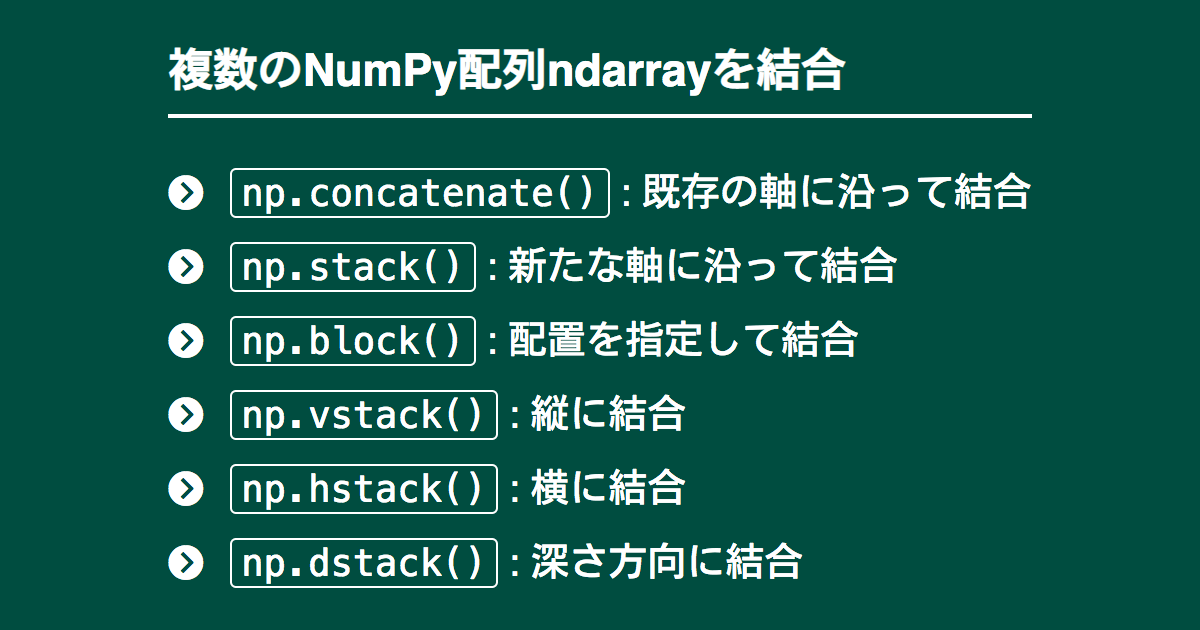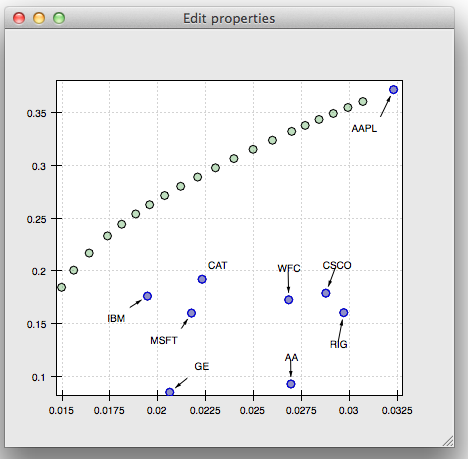

In order to join two arrays, Python NumPy module provides different types of functions which are concatenate (), stack (), vstack (), and hstack (). While this option 3 works, the output doesn't quite make sense to me since it looks identical to the original string for example convertedDate returns numpy.datetime64('20141017000000'). vstack () function is used to stack the sequence of NumPy arrays vertically and return the single array. Option #2 ( from here) from datetime import datetimeĬonvertedDate = datetime.strptime(t, '%YY%mm%dd%HH%MM%ss')Įrror: strptime() argument 1 must be str, not numpy.ndarrayĬonvertedDate = Option #1 import matplotlib.dates as datesĮrror: can't multiply sequence by non-int of type 'float' Various answers I've found inevitably lead to errors including: import numpy as np a np.array(1,2,3,4,5,6,7,8,9) slices np.arange(0,3), np.arange(3,7), np.arange(7,9) max np.empty(0) min np.empty(0) for slice in slices: max np.concatenate(max, np.max(aslice)) min np.concatenate(min, np.
Numpy vstack datetime install#
To install NumPy, open up your terminal and run the following command: pip3 install numpy Copy After installing NumPy, you can import it into your working environment under an alias. I have posted a possible solution below, but I wonder if numpy has a method to do this without a loop. I just want to convert this to a datetime object that is compatible with matplotlib for plotting purposes. It is available as a PyPI package that is installable through pip. In addition pandas plays its own games with dates and times, some formats are internal, some are compatible with the numpy datatime64. comparing strings and numbers doesn't work). Numpy vstack, Numpy hstack, and Numpy concatenate are all somewhat similar.

Numpy vstack is actually one of several Numpy tools for combining Numpy arrays. It’s essentially a data manipulation tool in NumPy. I have a numpy array of strings saved as variable t with some associated data as raw_data: t = array(,dtype=' It’s syntax is: numpy.vstack (tup) The parameter it takes is a tuple which is a sequence of ndarrays that we want to concatenate. It is similar to concatenation along the axis 1 after 1-Dimensional arrays of (N) shape have been reshaped to the format (1,N). Numpy.vstack () is a function in Python that takes a tuple of arrays and concatenates them vertically along the first dimension to make them a single array. I am shocked at how long I've been running around down various rabbit holes trying to figure this problem out which (I thought) should be relatively simple. In python, numpy.vstack () is a function that helps to stack the input array sequence vertically in order to create a single array.


 0 kommentar(er)
0 kommentar(er)
